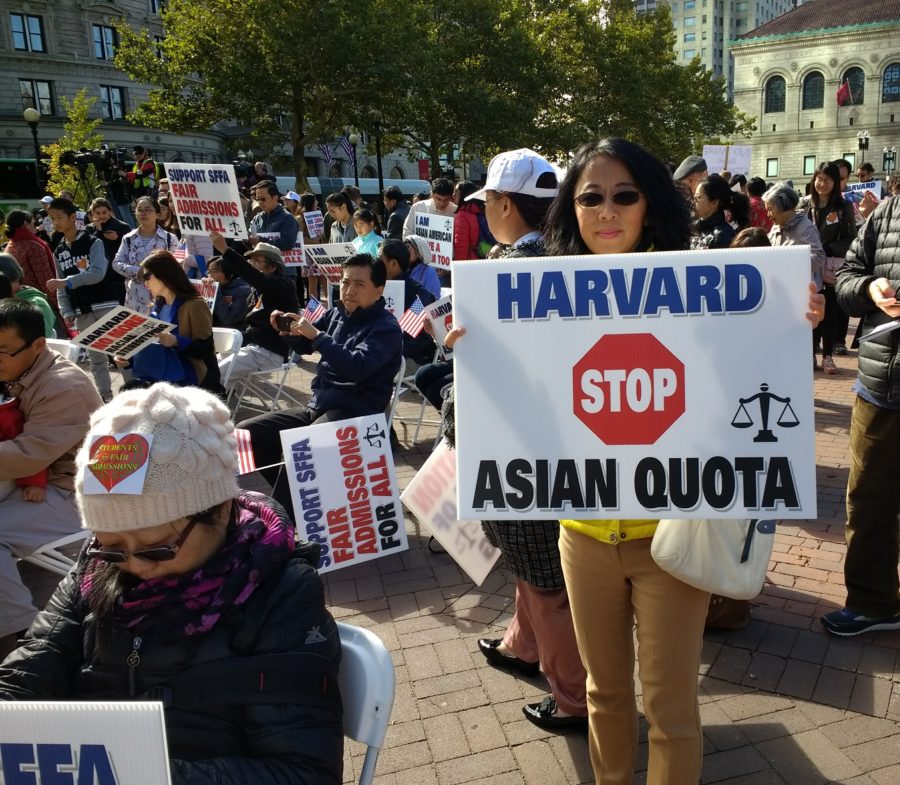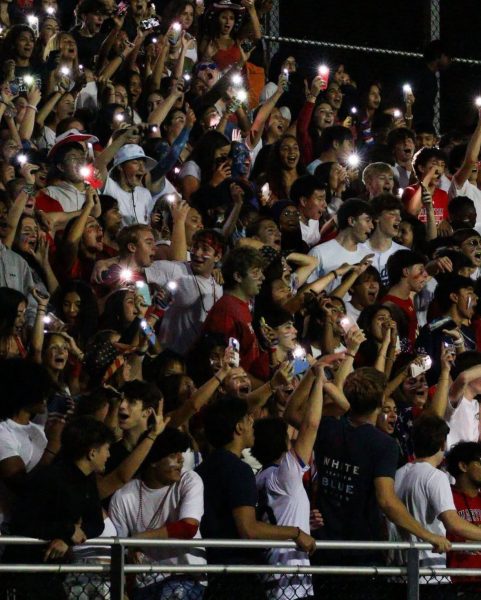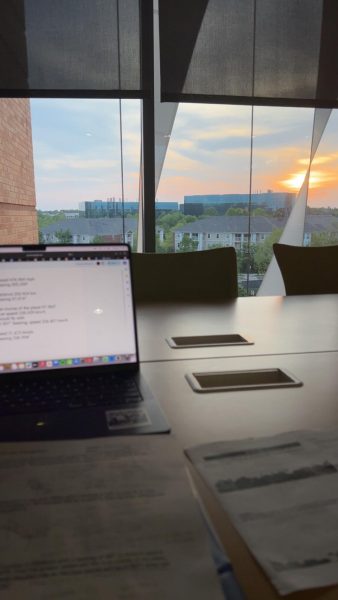The diaspora dogfight: Affirmative action’s true disregard for minorities
Photo used with permission from Google Creative Commons
Members of the Support Fair Admissions for All group rally in opposition of affirmative action policies outside the Supreme Court, where judges hear a case arguing that Asian students are not examined under the same provisions as other minority applicants of Harvard University.
Affirmative action, per the Oxford Dictionary, is defined as the practice or policy of favoring individuals belonging to groups regarded as disadvantaged or subject to discrimination. In an academic context, affirmative action refers to the practice of higher education institutions attempting to increase the diversity of their student bodies by expanding the acceptance and enrollment of students of color. While seemingly simple, the nuances behind affirmative action and its implications, both for students and institutions, have become substantially complex in the last 10 years.
Although affirmative action was implemented by higher education institutions in order to increase their student body diversity and encourage people of color to pursue undergraduate and graduate schools, allegations of a skewed focus on what students of color are prioritized by has dominated the conversations around the implementation of supposedly equitable policies of acceptance and enrollment. In accordance with recent events, higher education institutions have been scrutinized for their biased application of these affirmative action policies, and specifically their inapplication of the policies towards Asian American applicants.
The most recent and blaring example of this issue arises at the most prestigious institution in the country and arguably the world, Harvard University. In November 2022, the United States Supreme Court heard arguments from Students for Fair Admissions, a nonprofit dedicated to lawsuits regarding rejection of students due to their race, which argued that the university was actively discriminating against Asian students by holding them to a higher admission standard than other applicants, including Black and Latino students.
The publicization of this case reflects a common sentiment among students here, with the idea that their application cannot reflect their uniqueness or potential with the ceaseless conclusion of falling into a rejection pool of hundreds of other incredibly qualified Asian applicants. However, the universal belief of a lack of appreciation for Asian students brought forth by popularized lawsuits of iconic institutions brings in turn a diminishment of the successes of Black and Latino students, specifically in the college applications process.
I can personally attest to the permeance of this mentality among the student body here, as I continually get told that the reason I got into Northwestern with a full ride merit scholarship wasn’t because of my 4.0 GPA or countless extracurriculars, but to solely be another friendly face on Northwestern’s diversity page. This dismissal of my success, while likely harmless and a tactic of projection of one’s insecurities onto me, I have to admit that it does occasionally float through my mind, and I wonder if the outcome would have been the same if I had selected “other” on the race portion of my application, Yet, the expression of my Blackness, especially in the writing portions of my application, would have been evident regardless, and thus my SAT score and recommendations only add to the opportunity and potential that Northwestern, or any other school for that matter, saw in my application.
Despite its publicization, one of the most critical aspects of affirmative action policies that consistently goes underrecognized is its hidden protection of legacy students. The adaptation of affirmative action policies by publicly surveilled universities and institutions makes the institutions look good, as it provides a social protection under the guise of university diversity and an increase in enrollment of students with various backgrounds.
In reality however, the ‘spots’ in enrollment taken by students of color were only taken away from students who could afford the prices of tuition, largely made up of white students with mediocre statistics and relatively well-rounded applications. Affirmative action policies actively avoid policing students who provide them the prestige and financial freedom to entrust billion dollar endowments and create brand new buildings: legacies and donor students. Thus, legacy students are accepted regardless of the adoption of affirmative action policies, and the front of a more well-rounded student body shatters once it becomes clear that the sizable portion of legacy students and donors (25-35% at Harvard) are shielded.
Therefore, the application of affirmative action policies, while they do allow for Black and Brown students to become increasingly likely to attend established institutions, creates a complex web of implications for students of Asian American descent. These policies simultaneously avoid legacies, the one group of students who, in my opinion, steal opportunity from those most deserving of the opportunities that higher education, especially at prestigious universities can provide.
Without a proper strategy created and adapted to curb legacy students and actively discourage educational institutions from considering student profit in their decisions, the persistent cycle of a lack of equity in the college admissions process will forever pollute the beauty of the institutions themselves.
Your donation will support the student journalists of Thomas S. Wootton High School. Your contribution will allow us to purchase equipment and cover our annual website hosting costs.
Margarita is a 2023 graduate.







